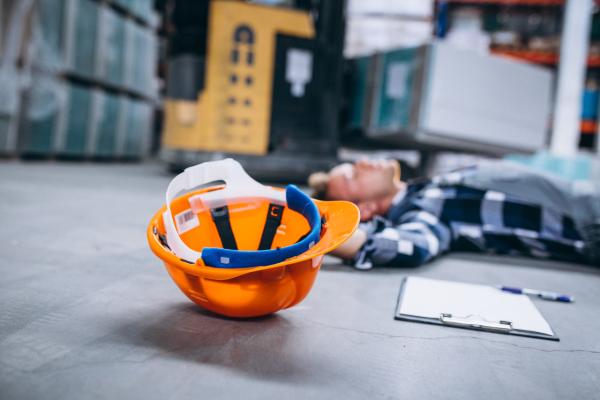Accidents in the workplace are unfortunate but can happen even in the safest environments. For employers, having a well-structured response plan is crucial to ensuring the health and safety at work for all employees. Here are best practices that every employer should follow when responding to workplace accidents.
Immediate Response: Prioritising Employee Safety
The first step in responding to any workplace accident is to ensure the immediate safety of the affected employee and others nearby. Assess the situation to determine if there are any ongoing hazards, such as live electrical wires, chemical spills, or machinery that needs to be shut down. If necessary, evacuate the area to prevent further injuries.
Provide first aid to the injured employee if it’s safe to do so and within your training limits. In cases of severe injury, contact emergency services immediately. Make sure that all employees know the location of first aid kits and are aware of the trained first aiders within the workplace. Quick and efficient action can minimise the severity of injuries and protect other employees from harm.
Documenting the Incident: Accurate Record-Keeping
After the immediate response, it’s essential to document the accident as thoroughly as possible. This includes recording the date, time, and location of the incident, as well as details about the injured employee and the nature of their injuries. Collect statements from any witnesses and take photographs of the accident scene if appropriate. Accurate and detailed records are crucial for complying with health and safety at work regulations in Ireland.
Employers are legally required to report certain types of workplace accidents to the Health and Safety Authority (HSA) under the Safety, Health and Welfare at Work (General Application) Regulations 2007. These include accidents that result in an employee being absent from work for more than three consecutive days or any fatal incidents. Prompt reporting is not only a legal obligation but also helps in preventing future accidents by allowing for a thorough investigation.
Investigating the Accident: Root Cause Analysis
Conducting a thorough investigation is key to understanding why the accident occurred and how similar incidents can be prevented in the future. Start by reviewing the documented evidence and speaking with the injured employee, if possible. Analyse the workplace conditions, equipment involved, and any actions that led to the accident. The goal is to identify the root cause of the incident, whether it be human error, equipment failure, or unsafe working conditions.
It’s important to involve employees in the investigation process, as they can provide valuable insights and help to identify potential hazards that may have been overlooked. Once the root cause is determined, develop an action plan to address it. This may involve updating safety procedures, providing additional training, or making changes to the workplace environment.
Supporting the Injured Employee: Legal and Ethical Responsibilities
Employers in Ireland have both legal and ethical responsibilities to support employees who have been injured at work. This includes providing necessary medical care, ensuring the employee receives any benefits they are entitled to under Irish law, and facilitating a smooth return to work. Maintaining open communication with the injured employee is crucial, as it shows that their well-being is a priority and helps to alleviate any concerns they may have.
In some cases, an employee may require adjustments to their work duties or environment upon returning to work. Employers should be proactive in accommodating these needs, whether through modified duties, adjusted hours, or ergonomic adjustments. This not only supports the employee’s recovery but also promotes a positive health and safety at work culture within the organisation.
Reviewing and Updating Safety Protocols: Preventing Future Incidents
Once the investigation is complete and corrective actions have been taken, it’s essential to review and update workplace safety protocols. This may involve revising risk assessments, enhancing safety training programmes, or investing in safer equipment. Regularly updating safety procedures ensures that they remain effective and relevant, reducing the likelihood of future accidents.
Employers should also foster a culture of continuous improvement by encouraging employees to report potential hazards and near-miss incidents. This proactive approach to health and safety at work helps to identify and address risks before they result in accidents, creating a safer work environment for everyone.
Conclusion
Responding effectively to workplace accidents is critical for protecting employees and maintaining compliance with health and safety at work regulations in Ireland. By prioritising immediate safety, documenting incidents accurately, investigating root causes, supporting injured employees, and updating safety protocols, Irish employers can not only respond to accidents efficiently but also prevent them from happening in the future. Creating a safe and supportive workplace environment is not just a legal obligation, it’s a commitment to the well-being of every employee.

